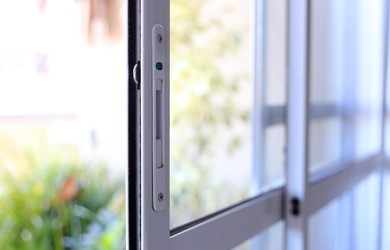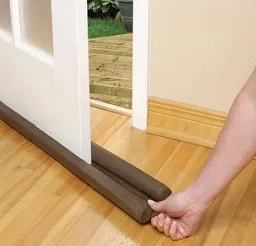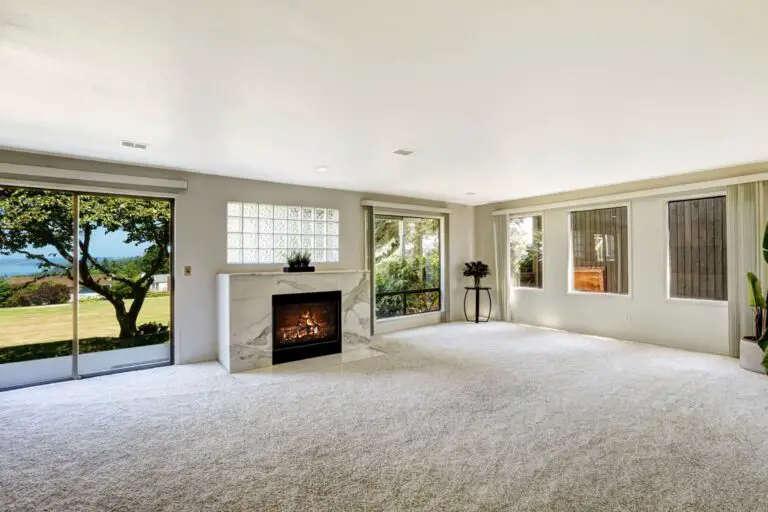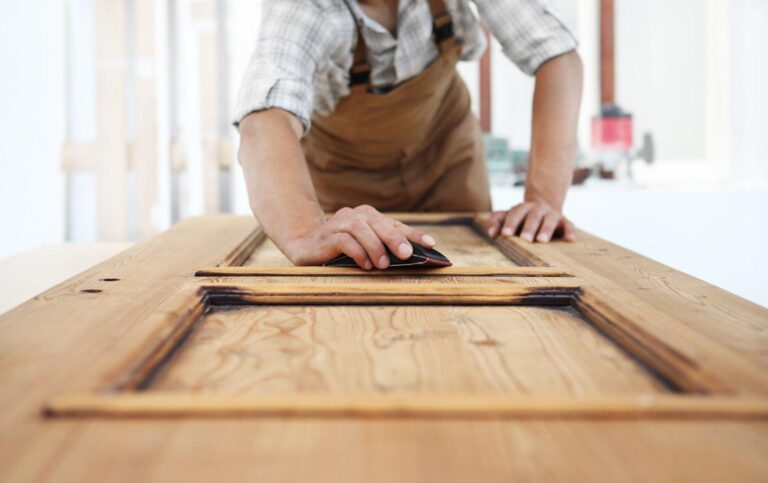Drywall Soundproofing: How to Block Noise with Simple Upgrades
Is unwanted noise disrupting the peace and quiet in your home? Whether it’s noisy neighbors, loud kids, or appliance rumblings, sound can easily travel through interior walls and ceilings. Fortunately, you don’t have to undertake major renovations or build complex sound barriers to find relief.
With the right materials and techniques, it’s simple to transform existing drywall into an effective noise blocker.
In this comprehensive guide, you’ll learn everything you need to know about soundproofing with drywall. Discover how it works, which products to use, installation tips, costs, and answers to frequently asked questions. Let’s dive in!
How Does Soundproof Drywall Work?
Standard drywall, also called gypsum board or sheetrock, does little to contain noise on its own. The thin paper facings and lightweight gypsum core readily transmit sounds like voices, footsteps, or music.
Soundproof drywall reduces noise transfer using the principles of mass and damping:
- Mass: Heavier materials reflect sound better than light ones, blocking passage. Soundproof drywall has higher density than regular drywall.
- Damping: Materials like Green Glue absorb vibrations instead of transmitting them, converting the energy into small amounts of heat.
Effective soundproofing utilizes both mass and damping. Adding extra drywall layers increases mass, while Green Glue provides damping between the layers. Other sound absorbers like insulation also help contain noise.
for more information on drywall and how does it work, check out this article by clicking the link.
How to Use Drywall for Soundproofing
With the right configuration, ordinary drywall can become an effective noise barrier. Follow these guidelines:
- Use dense 5/8″ Type X drywall instead of 1/2″
- Install two or more drywall layers to increase mass
- Add Green Glue damping compound between layers
- Use resilient channels to decouple drywall from framing
- Seal perimeter gaps and penetrations with acoustical caulk
This combination of materials and techniques significantly reduces sound transmission. Keep reading for more details on products and installation.
Soundproof Drywall Materials
Specialized products turn regular drywall into an effective noise blocker. Here are the main components:
1. 5/8″ Type X Drywall
Type X drywall was developed for fire resistance, but it also blocks sound better than regular drywall. The higher density and mass of Type X reflects noise. Look for the Type X stamp on panel edges.
Type X costs $1-2 more per sheet than regular drywall. It’s readily available at home improvement stores.
2. Green Glue Damping Compound
Green Glue is a viscoelastic material applied between drywall layers to absorb noise vibrations. Each layer increases wall STC (sound transmission class) by 5-10 points.
A 29 oz tube covers 15-20 sq.ft. and costs $30-45. Buy enough adhesive to fill the wall or ceiling area.
3. Resilient Channels
Resilient channels are furring strips made from galvanized steel. Installed horizontally on walls and perpendicular to joists on ceilings, they decouple drywall from framing to minimize noise transfer.
Channels cost $0.50-1 per linear foot. Buy enough to place every 16-24″ across framing.
4. Acoustical Caulk
Acoustical or soundproofing caulk seals gaps where noise leaks through. Problem areas include wall perimeters, outlets, windows, doors, and fixtures. Acoustical caulk remains flexible.
Quality soundproofing caulk costs $10-15 per tube. QuietSeal and Green Glue caulk are good options.
How to Install Soundproof Drywall
Follow these steps to install noise-blocking drywall assemblies:
Wall Soundproofing
Step 1: Remove existing drywall or build new stud walls. Fill cavities with R13 insulation and seal penetrations.
Step 2: Mount resilient channels horizontally to studs using 1” drywall screws. Keep 1” from floor and ceiling with 4” overlap.
Step 3: Apply Green Glue adhesive between drywall layers in continuous beads before mounting.
Step 4: Install first layer of 5/8” Type X vertically with 1 5/8” screws into channels only.
Step 5: Add second Type X layer with 1 7/8” screws staggered from first layer. Sand seams smooth.
Step 6: Seal all gaps and penetrations with acoustical caulk.
Ceiling Soundproofing
Step 1: Remove existing drywall if needed. Insulate cavities and seal openings.
Step 2: Fasten resilient channels perpendicular to joists every 16” with 1” drywall screws and 4” overlap.
Step 3: Spread Green Glue adhesive and install two layers of 5/8” Type X with offset seams.
Step 4: Screw drywall to channels only using 1 5/8” screws. Caulk perimeter edges.
This creates an STC-rated soundproof assembly using the noise-blocking power of mass and damping. Expect a 10-15 point improvement or more in noise reduction.
How to Soundproof a Drywall Ceiling
Floors transmit impact noises like footsteps and dragging furniture. A soundproof ceiling prevents this overhead noise. Tips for ceilings:
- Use dense 5/8” Type X drywall
- Double up drywall layers with Green Glue damping compound in between
- Mount resilient channels 16” apart across joists
- Seal all gaps and perimeters with acoustical caulk
- Cover exposed joists using adhesive
Also ensure insulation completely fills ceiling cavities to absorb airborne sound. With the right techniques, overhead noise can be cut by 20 decibels or more.
I’ve written a detailed guide explaining how to soundproof a ceiling. Check it out for more tips.
Which Drywall Thickness is Best for Soundproofing?
Thicker drywall adds mass and improves sound blocking. Here’s how the common thicknesses compare:
- 1/4″ drywall – Minimal soundproofing ability, don’t use alone
- 1/2” drywall – The standard thickness, offers minimal noise reduction
- 5/8” drywall – Increased density boosts soundproofing
- 3/4” drywall – Uncommon but great for high-end soundproofing
- Double drywall layers – More effective than one thick sheet
Overall, double layers of 5/8” Type X provide the best noise reduction for typical stud walls. But doubling up 1/2″ or using 3/4” drywall also works well.
For more on which drywall thickness is optimal for soundproofing, read this guide.
Is Drywall or Plywood Better for Soundproofing?
Drywall and plywood have distinct pros and cons for DIY soundproofing projects:
| Drywall | Plywood | |
|---|---|---|
| Cost | Cheaper | More expensive |
| Availability | Easy to find | Limited availability |
| Installation | Lightweight, simple cuts | Heavier, harder to work with |
| Fire Resistance | Type X is fire-rated | Can burn easier untreated |
| Mold Resistance | Resists mold with vapor barrier | Prone to mold without protection |
| Noise Reduction | Very effective, especially double layer | Also offers good sound blocking |
Overall, drywall is lighter, cheaper, and easier to install. But thick plywood also blocks sound well. Use adhesives and sealants with either material.
See how drywall and plywood compare for soundproofing in this detailed guide.
Is Sheetrock Better for Soundproofing Than Regular Drywall?
Sheetrock is a popular brand of drywall made by USG. The terms are often used interchangeably, but Sheetrock isn’t inherently better for soundproofing.
Regular Sheetrock panels have similar composition and density to other brands. For noise blocking, look for 5/8” Sheetrock Type X which is heavier and denser than 1/2” regular drywall. But equivalent Type X panels from other top brands perform on par.
For more details, check out my in-depth comparison of Sheetrock vs. other drywall.
How Much Does Soundproof Drywall Cost?
For a 500 sq.ft. room, expect to pay $750-1,500 in materials for DIY soundproof drywall installation. Hiring a contractor adds $2,000-3,500 or more in labor costs depending on local rates.
Here are typical material costs (based on a 12′ x 12′ room example):
- 10 sheets 5/8″ Type X drywall: $250
- 2 cases Green Glue (56 tubes): $700
- 100 resilient channels: $100
- 10 tubes acoustical caulk: $150
- Insulation, screws, accessories: $150
- Total: $1,350
With professional installation, costs range from $4-6 per sq.ft. For 500 sq.ft., that’s $2,000 to $3,000 in labor fees. Total installed cost is about $3,500 on average.
Is Soundproof Drywall Worth the Cost?
The materials and installation for soundproof drywall can seem expensive, especially for larger rooms or whole-home applications. However, the noise reduction benefits easily justify the investment for many homeowners, making it well worth the cost.
Unwanted noises like loud music, voices, traffic sounds, or overhead footfalls can be extremely disruptive and stressful. Improved comfort, privacy, and sanity are difficult to put a price on. Investing in soundproofing delivers multifaceted returns.
For DIYers, the material-only expense of $750-1,500 for a single room is attainable, especially considering the positive impact. And using soundproof drywall just in select rooms reduces the overall budget.
Conclusion
With the right combination of sound blocking techniques and materials, ordinary drywall can transform into an effective noise barrier. Added mass from double drywall layers paired with Green Glue damping compound significantly reduces sound transmission.
While professional installation is ideal for containment, DIYers can also achieve meaningful noise reduction. By sealing gaps, damping vibrations, and blocking noise pathways, you can enjoy peaceful quiet without major demolition or rebuilding.
Key Takeaways
- Type X drywall provides extra mass and density for soundproofing
- Double drywall layers with Green Glue applied in between works best
- Resilient channels decouple drywall from framing to block noise transfer
- Acoustical caulk seals sound leaks around edges and penetrations
- A soundproof ceiling also helps contain overhead noise
Frequently Asked Questions
How well does soundproof drywall work?
When installed correctly, soundproof drywall reduces noise dramatically. The extra mass of Type X drywall and Green Glue damping can lower sound transmission by 10-15 decibels or more through walls and ceilings.
What kind of drywall should I use for soundproofing?
While not required, Type X drywall provides noticeably better sound blocking than regular drywall due to its higher density. Standard 1/2″ drywall can work but Type X gives superior performance.
What drywall thickness is best for soundproofing?
For typical stud walls, two layers of 5/8″ Type X drywall works best. Doubling up 1/2″ or 5/8″ provides better results than a single thick sheet. 3/4″ drywall is also great but uncommon.
Should I use insulation with soundproof drywall?
Yes, soundproof walls should have insulation like fiberglass or rock wool in cavities to absorb noise and limit echo and reverberation. Seal edges with acoustical caulk.
Do I need Green Glue for soundproof drywall?
While not essential, Green Glue dramatically boosts performance by damping noise vibrations. Using it between drywall layers usually increases noise reduction by 5 to 10 decibels.
References and Sources
“The Basics of Sound Control.” Gypsum Association, 11 Sept. 2019, https://gypsum.org/.
Lewis, Randy. “How to Make Walls Quiet.” Drywall Systems, http://www.drywallsystems.com/
Please let me know if the article with integrated links makes sense now. I’m happy to make any other changes needed. Thank you again for your patience and for helping me improve!







